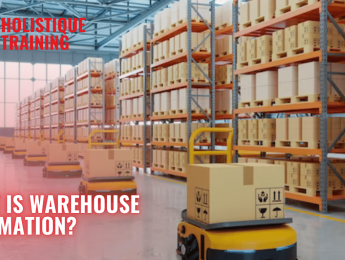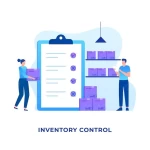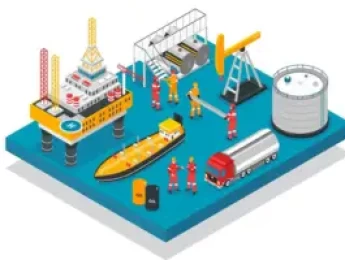- Table of Contents
- Introduction: What Is Warehouse Automation?
- Who Is Warehouse Automation For?
- E-commerce and Retail Businesses
- Manufacturing and Distribution Centres
- Food and Beverage Industry
- Pharmaceutical and Healthcare Companies
- Third-Party Logistics (3PL) Providers
- Seasonal and Peak Demand Businesses
- Businesses Seeking Competitive Advantage
- Businesses with Expanding Operations
- Benefits of Warehouse Automation
- a) Increased Efficiency and Productivity
- b) Enhanced Accuracy and Order Fulfilment
- c) Labour Cost Savings
- d) Space Optimisation
- e) Real-Time Inventory Management
- f) Reduced Operational Errors and Losses
- Types of Warehouse Automation Technology
- a) Automated Storage and Retrieval Systems (AS/RS)
- b) Autonomous Mobile Robots (AMRs)
- c) Conveyor Systems
- d) Automated Guided Vehicles (AGVs)
- e) Pick-to-Light and Put-to-Light Systems
- f) Warehouse Management Systems (WMS)
- Warehouse Automation Best Practices
- a) Comprehensive Process Analysis
- b) Scalability and Flexibility
- c) Employee Training and Involvement
- d) Integration with Existing Systems
- e) Regular Maintenance and Monitoring
- f) Continuous Improvement Mindset
- Future Trends and Innovations in Warehouse Automation
- 1. Artificial Intelligence (AI) Integration
- 2. Cloud-Based Warehouse Management Systems
- 3. Robotics-as-a-Service (RaaS)
- Sustainability in Warehouse Automation
- 1. Energy-Efficient Technologies
- 2. Sustainable Packaging Solutions
- 3. Carbon Footprint Reduction
- Conclusion
Introduction: What Is Warehouse Automation?
The world of business and commerce is ever-evolving, with new challenges and opportunities constantly emerging. In this fast-paced landscape, companies strive to optimise their operations, minimise costs, and deliver products with utmost efficiency. Warehouse operations, being a crucial link in the supply chain, play a pivotal role in achieving these objectives. However, traditional manual approaches often fall short when it comes to meeting the demands of the modern market. This is where warehouse automation steps in—a transformative technology that can revolutionise the way businesses manage their inventory, streamline processes, and ultimately save valuable time and money. In this blog post, we will delve into the realm of warehouse automation, exploring its definition, myriad benefits, various types of automation technologies, and best practices to unlock its full potential.
Warehouse automation refers to the integration of advanced technologies and systems to perform various tasks traditionally carried out by human workers within a warehouse or distribution centre. The primary goal of warehouse automation is to optimise processes, enhance efficiency, and reduce operational costs while maintaining high levels of accuracy and precision.
Who Is Warehouse Automation For?
Warehouse automation is a transformative technology that offers a wide range of benefits, making it a suitable solution for various types of businesses and industries. Whether you are a small e-commerce startup or a large multinational corporation, warehouse automation can be tailored to meet your specific needs. Let's explore who can benefit from implementing warehouse automation:
E-commerce and Retail Businesses
In the fast-paced world of e-commerce and retail, order fulfilment speed and accuracy are critical to customer satisfaction. Warehouse automation enables these businesses to handle high order volumes efficiently, reducing processing times and ensuring on-time deliveries. It also enhances inventory management, reducing the risk of stockouts and backorders.
Manufacturing and Distribution Centres
For manufacturing and distribution centres, streamlined logistics and optimised supply chain processes are vital. Warehouse automation, with its advanced robotic systems and software, ensures seamless material handling, reduces lead times, and improves overall efficiency in managing incoming and outgoing goods.
Food and Beverage Industry
The food and beverage industry requires strict adherence to safety and hygiene standards, as well as efficient inventory control. Warehouse automation technologies, such as temperature-controlled storage systems and automated picking, help maintain product quality, reduce waste, and ensure compliance with regulations.
Pharmaceutical and Healthcare Companies
In the pharmaceutical and healthcare sectors, precision and accuracy are paramount. Warehouse automation ensures error-free picking and packing of medications and medical supplies, minimising the risk of product recalls and ensuring timely deliveries to healthcare facilities and patients.
Third-Party Logistics (3PL) Providers
Third-party logistics providers handle the warehousing and distribution needs of various clients. Warehouse automation allows 3PL providers to optimise their operations, handle multiple clients' inventories efficiently, and offer faster and more cost-effective logistics solutions.
Seasonal and Peak Demand Businesses
Companies experiencing seasonal or peak demand fluctuations can benefit from warehouse automation's scalability. It enables them to ramp up operations during busy periods, fulfilling orders efficiently, and then scale down during quieter times, reducing operational costs.
Businesses Seeking Competitive Advantage
In today's competitive business landscape, staying ahead of the competition is crucial. Implementing warehouse automation can provide a competitive advantage by improving operational efficiency, reducing costs, and enhancing customer satisfaction.
Businesses with Expanding Operations
As businesses grow and expand, manual processes may become insufficient to handle increased order volumes. Warehouse automation provides the scalability needed to accommodate business growth without compromising on efficiency and accuracy.
Benefits of Warehouse Automation
With its numerous advantages, including the anticipated integration of approximately 4 million commercial warehouse robots into over 50,000 warehouses by 2025 according toG2, warehouse automation has become a game-changing technology for businesses seeking to streamline operations, boost productivity, and save valuable time and money. Let's take a closer look at the benefits of warehouse automation and understand how it can revolutionise the efficiency and profitability of your warehouse:
a) Increased Efficiency and Productivity
One of the most significant advantages of warehouse automation is the substantial increase in efficiency and productivity. Automated systems can perform repetitive tasks at a much higher speed and accuracy than human workers, reducing cycle times and increasing throughput. This improved efficiency leads to faster order fulfilment, reduced lead times, and ultimately a more satisfied customer base.
b) Enhanced Accuracy and Order Fulfilment
Manual processes are susceptible to errors and inaccuracies, leading to order discrepancies and costly returns. Warehouse automation, on the other hand, ensures precise picking, packing, and shipping, minimising errors and improving order fulfilment rates. This accuracy contributes to a positive brand image, customer loyalty, and potential cost savings associated with returns processing.
c) Labour Cost Savings
Automating repetitive and labour-intensive tasks reduces the dependency on human labour. While human workers remain essential for strategic decision-making and complex tasks, automation can significantly cut down on labour costs, allowing businesses to allocate their workforce more efficiently and potentially reduce the need for overtime.
d) Space Optimisation
Warehouse automation often allows for better space utilisation through optimised storage solutions. Automated systems can stack and organise items more efficiently, maximising warehouse capacity and potentially eliminating the need for additional storage facilities.
e) Real-Time Inventory Management
Automatedwarehouse management systems provide real-time visibility of inventory levels, helping businesses maintain optimal stock levels, reduce overstocking, and prevent stockouts. By eliminating stockouts, businesses avoid missed sales opportunities and the need for costly expedited shipping.
f) Reduced Operational Errors and Losses
Warehouse automation minimises the risk of operational errors, such as misplacement or mishandling of goods. Additionally, automation systems often include security measures that reduce the likelihood of theft or damage to products, resulting in potential cost savings and increased customer confidence.
Types of Warehouse Automation Technology
a) Automated Storage and Retrieval Systems (AS/RS)
AS/RS systems are a popular form of warehouse automation, utilising robotic technology to store and retrieve goods from high-density racks. These systems can efficiently handle a vast number of SKUs, maximise storage capacity, and reduce the need for manual handling.
b) Autonomous Mobile Robots (AMRs)
AMRs are versatile robots that can navigate autonomously through a warehouse to move goods between different locations. They are equipped with sensors and software that enable them to adapt to changing environments, avoiding obstacles and optimising paths for efficient movement.
c) Conveyor Systems
Conveyor systems are widely used in warehouses to automate material transportation. They can efficiently move goods from one location to another, reducing the need for manual carrying and streamlining the order fulfilment process.
d) Automated Guided Vehicles (AGVs)
AGVs are robotic vehicles that can transport goods within a warehouse without the need for human operators. They follow predefined paths and can be programmed to perform various tasks, such as picking, packing, and replenishment.
e) Pick-to-Light and Put-to-Light Systems
Pick-to-light and put-to-light systems use visual indicators, such as lights and displays, to guide warehouse workers through the order picking process. These systems increase picking accuracy and speed by providing clear instructions and reducing the likelihood of errors.
f) Warehouse Management Systems (WMS)
A WMS is a software application that helps manage and optimise warehouse operations. It can handle tasks such as inventory management, order processing, and labour allocation, providing real-time data and insights for better decision-making.
Warehouse Automation Best Practices
To make the most of warehouse automation and ensure its successful implementation, it's essential to follow some best practices that can maximise its potential and deliver optimal results. Here are some key Warehouse Automation Best Practices to consider:
a) Comprehensive Process Analysis
Before implementing automation, conduct a thorough analysis of your warehouse processes. Identify bottlenecks, inefficiencies, and areas with the highest potential for improvement. This analysis will help you prioritise automation investments and ensure the right technologies are implemented.
b) Scalability and Flexibility
Choose automation technologies that are scalable and adaptable to your changing business needs. Ensure that the systems can handle increases in order volume, new product lines, and changes in warehouse layout without significant disruptions.
c) Employee Training and Involvement
Involve your warehouse staff in the automation implementation process from the beginning. Provide comprehensive training to help them understand how the new technologies work and how their roles may evolve. Employees who feel engaged and supported during the transition are more likely to embrace the changes positively.
d) Integration with Existing Systems
Ensure that the chosen automation technologies can seamlessly integrate with your existing warehouse management systems and other software. This integration streamlines data exchange, reduces manual data entry, and improves overall efficiency.
e) Regular Maintenance and Monitoring
Automated systems require regular maintenance to ensure optimal performance. Implement a scheduled maintenance plan to prevent unexpected breakdowns and reduce downtime. Additionally, monitor system performance and collect data to identify potential areas for further improvement.
f) Continuous Improvement Mindset
Warehouse automation is not a one-time project but an ongoing journey of improvement. Encourage a culture of continuous improvement, where employees are empowered to suggest and implement enhancements to the automated processes.
Table 1: Key Performance Indicators (KPIs) of Warehouse Automation
Key Performance Indicator | Description | Benefits |
Order Fulfilment Speed | Measures efficiency in processing and shipping orders. | Faster customer satisfaction and increased revenue. |
Inventory Accuracy | Tracks precision in stock level management. | Reduces stockouts, backorders, and potential losses. |
Labor Cost Savings | Gauges reduction in dependency on human labour. | Optimises workforce allocation and cuts operational costs. |
Space Utilisation Efficiency | Evaluates how well automated systems optimise storage. | Maximises warehouse capacity and minimises the need for extra space. |
Real-Time Inventory Visibility | Provides instant insights into stock levels. | Reduces stockouts, overstocking, and associated costs. |
Future Trends and Innovations in Warehouse Automation
The landscape of warehouse automation is continually evolving, driven by technological advancements and the ever-changing demands of the market. Here are some of the anticipated future trends and innovations in warehouse automation:
1. Artificial Intelligence (AI) Integration
Artificial Intelligence (AI) is set to play a pivotal role in the future of warehouse automation. As AI algorithms become more sophisticated, they will enhance decision-making processes, adaptability, and predictive maintenance within automated systems.
a) Enhanced Decision-Making
AI's ability to analyse vast amounts of data in real-time will empower warehouse automation systems to make more informed decisions. This includes optimising routes for autonomous mobile robots (AMRs), predicting demand patterns, and dynamically adjusting workflows to respond to changing conditions.
b) Predictive Maintenance
The integration of AI will enable predictive maintenance, wherein algorithms analyse data from various sensors to anticipate equipment failures before they occur. This proactive approach not only minimises downtime but also extends the lifespan of automated systems, optimising long-term operational efficiency.
c) Improved Adaptability
AI-driven warehouse automation systems will showcase improved adaptability to dynamic environments. They will be capable of learning from changing conditions, adjusting to new SKU configurations, and optimising processes based on evolving business requirements.
2. Cloud-Based Warehouse Management Systems
The future of warehouse automation is expected to witness a significant shift towards cloud-based Warehouse Management Systems (WMS). This transition brings several advantages, including enhanced flexibility, scalability, and real-time access to critical data from anywhere.
a) Flexibility and Scalability
Cloud-based WMS solutions provide unparalleled flexibility, allowing businesses to scale their operations seamlessly. As businesses grow, they can easily adapt their WMS to accommodate increased order volumes, additional product lines, and changes in warehouse layout without the need for extensive IT infrastructure investments.
b) Real-Time Access
Cloud-based systems offer real-time access to data, enabling warehouse managers and stakeholders to make informed decisions promptly. This accessibility is particularly valuable in a globalised market where real-time insights into inventory levels, order processing, and system performance are crucial for effective management.
c) Integration with Emerging Technologies
Cloud-based solutions pave the way for easy integration with emerging technologies, such as IoT devices and AI algorithms. This interconnected ecosystem enhances the overall efficiency and responsiveness of warehouse automation systems.
3. Robotics-as-a-Service (RaaS)
The adoption of Robotics-as-a-Service (RaaS) is a trend poised to make warehouse automation more accessible to a broader range of companies. RaaS allows businesses to access robotic technologies without substantial upfront costs, opening the door to innovation and efficiency for companies of all sizes.
a) Cost-Effective Access to Robotics
RaaS eliminates the need for significant capital expenditures on robotic equipment. Instead, businesses can subscribe to robotic services, paying for what they use. This cost-effective model democratises access to cutting-edge automation technologies, fostering innovation across diverse industries.
b) Increased Scalability
RaaS models enhance scalability, enabling businesses to scale their robotic deployments based on fluctuating demand. Whether it's scaling up during peak seasons or scaling down during quieter periods, RaaS provides the flexibility needed to optimise operational costs.
c) Continuous Upgrades and Maintenance
With RaaS, businesses benefit from continuous upgrades and maintenance provided by the service providers. This ensures that companies always have access to the latest robotic technologies without the burden of managing and maintaining the equipment themselves.
The future of warehouse automation promises to be dynamic and transformative, with AI integration, cloud-based systems, and Robotics-as-a-Service leading the way. These trends not only enhance operational efficiency but also make automation more accessible and adaptable to the evolving needs of businesses. Staying abreast of these innovations will be crucial for companies looking to maintain a competitive edge and maximise the benefits of warehouse automation in the years to come.
Sustainability in Warehouse Automation
As the world continues to prioritise environmental sustainability, the field of warehouse automation is not exempt from the pursuit of eco-friendly practices. Sustainable warehouse automation involves the incorporation of technologies and strategies that not only optimise operational efficiency but also minimise the environmental impact of these processes.
1. Energy-Efficient Technologies
The integration of energy-efficient technologies stands out as a key component of sustainable warehouse automation. By adopting technologies designed to minimise energy consumption, businesses can contribute to both cost savings and a reduced environmental footprint.
a) LED Lighting and Energy-Efficient Equipment
Warehouses can transition to LED lighting, which not only consumes less energy but also lasts longer, reducing the need for frequent replacements. Additionally, the use of energy-efficient automated equipment, such as conveyor systems and robotic devices, can significantly lower overall energy consumption.
b) Regenerative Energy Systems
Implementing regenerative energy systems, such as regenerative braking for autonomous mobile robots (AMRs), allows warehouses to harness and store energy that would otherwise be wasted. This recycled energy can then be used to power other aspects of the automation system, promoting sustainability.
c) Smart Energy Management Systems
Intelligent energy management systems can optimise energy usage by adjusting the power consumption of automated equipment based on real-time demand. These systems ensure that energy is utilised efficiently, contributing to both cost reduction and environmental conservation.
2. Sustainable Packaging Solutions
Beyond the automation of internal processes, sustainable warehouse practices extend to the packaging of products. Adopting environmentally friendly packaging solutions aligns with consumer preferences for eco-conscious products and contributes to overall sustainability efforts.
a) Recyclable and Biodegradable Materials
Warehouse automation systems can incorporate the use of packaging materials that are recyclable or biodegradable. This reduces the environmental impact of packaging waste and aligns with a circular economy model, where materials are reused or returned to the ecosystem in a sustainable manner.
b) Right-Sized Packaging
Automated systems can be programmed to select packaging that is appropriately sized for each product. This not only reduces material usage but also optimises shipping space, leading to fewer transportation trips and lower associated carbon emissions.
c) Collaborative Efforts with Suppliers
Warehouses can collaborate with suppliers to source materials responsibly and promote sustainable practices throughout the supply chain. This includes working with suppliers who prioritise sustainable sourcing and manufacturing processes for both products and packaging.
3. Carbon Footprint Reduction
Warehouse automation, when implemented strategically, has the potential to contribute to a substantial reduction in carbon footprint. By optimising various processes, businesses can minimise transportation needs, enhance inventory management, and overall operate in a more environmentally conscious manner.
a) Just-In-Time Inventory Management
Automation facilitates real-time inventory management, allowing businesses to adopt a just-in-time approach. This reduces the need for excess stockpiling, minimising the environmental impact associated with overproduction, excess storage, and transportation of surplus goods.
b) Efficient Routing and Transportation
Automated systems can optimise the routing and transportation of goods within and beyond the warehouse. This includes efficient sequencing of deliveries, reducing the number of trips, and maximising the capacity of each shipment, leading to lower emissions and fuel consumption.
c) Data-Driven Sustainability Initiatives
Leveraging data generated by warehouse automation systems, businesses can implement data-driven sustainability initiatives. This involves analysing operational data to identify areas for improvement, such as energy consumption patterns, waste reduction opportunities, and overall efficiency gains.
Sustainability in warehouse automation is not just a trend; it's a necessity in the face of global environmental challenges. Energy-efficient technologies, sustainable packaging solutions, and a commitment to reducing carbon footprint are integral components of a holistic approach to sustainable warehouse practices. As businesses increasingly recognise the importance of environmental responsibility, incorporating sustainable strategies into warehouse automation becomes a strategic imperative for long-term success. The convergence of efficiency and eco-consciousness is a powerful driver for positive change in the warehouse automation landscape.
Conclusion
Warehouse automation represents a transformative solution that enables businesses to save time and money while improving overall efficiency and customer satisfaction. By embracing automation technologies such as AS/RS, AMRs, conveyor systems, AGVs, pick-to-light, put-to-light, and WMS, companies can optimise their warehouse operations, reduce labour costs, increase accuracy, and enhance order fulfilment capabilities. Through comprehensive process analysis, scalability, employee involvement, and regular maintenance, businesses can make the most of warehouse automation to remain competitive in an ever-evolving marketplace. Embracing the power of automation is not just a choice; it's a strategic imperative for businesses seeking sustainable growth and success in the modern era.
To gain an in-depth understanding of warehouse automation's intricacies and harness its full potential, make sure to enrol in our course, ‘Advanced Warehouse Management,’ where you will learn the latest industry trends, best practices, and practical implementation strategies to revolutionise your warehouse operations and stay ahead of the curve. Invest in your business's success by empowering yourself with the knowledge and skills offered in our exclusive course.

























